The ugly truth about xenophobia

LOOKING BACK
The history of refugees and asylum seekers in South Africa dates to the 1980s. South Africa is Africa’s most industrialised country, and attracts thousands of foreign nationals every year, seeking refuge from poverty, economic crises, war and government persecution in their home countries. While the majority are from elsewhere on the continent, such as Zimbabwe, Malawi, Democratic Republic of Congo, Somalia and Ethiopia, many also come from Pakistan and Bangladesh.
Since the dawn of democracy in 1994, xenophobic violence against foreign nationals in South Africa has worsened. A number of reports have highlighted various issues contributing to xenophobia; some of which include poor service delivery and competition for resources.
HOW DID WE GET HERE?
A look at some of the most violent xenophobic attacks in the last decade.
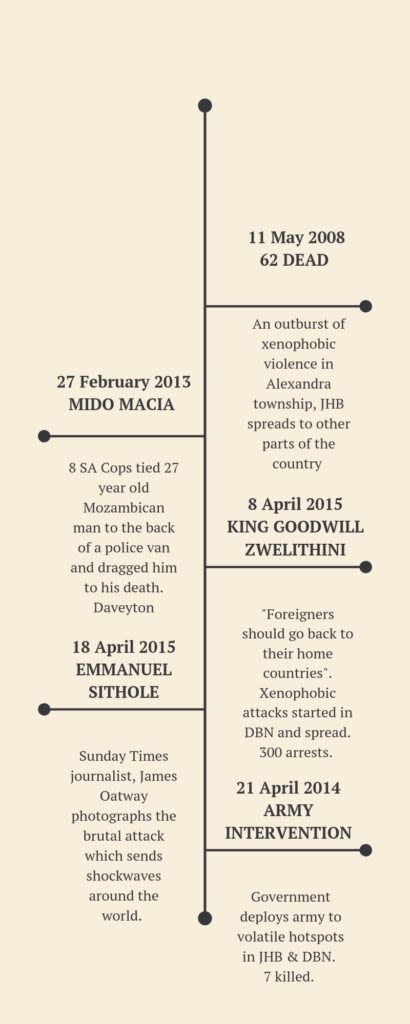
THE MEDIA & XENOPHOBIA
Misconceptions around foreign nationals can easily perpetuate discrimination towards the group and contribute towards hate and violence. The media has a responsibility to educate society about what is true and false.
Migration experts continue to criticize the media for its association of foreign nationals with miseries and indignities, or for grouping them with violence and conflict.
Research on media and xenophobia has shown that while media houses do not necessarily incite anti-immigrant sentiment, the way in which certain stories are framed could suggest an intrusion or invasion of ‘others’ which may deprive locals.
When newspapers relentlessly cover the African migrant worker in South Africa, locals start to believe that this will diminish their opportunities to earn a decent living. While it is newsworthy to report the influx of foreign nationals, the media also has a responsibility to prompt the government and South Africans to face tough questions about inequality and a lack of jobs.
Similarly, when a news brief states that a group was arrested for a crime i.e. possession of illegal firearms or drugs, and lists the nationalities of the suspects, while the story is not unfair, the pattern of lumping foreign nationals together with criminals perpetuates stereotypes about people’s legality and their actions as being criminals.
Research has also shown that the failure of media houses to contextualise matters involving foreign nationals can lead to the spreading of misinformation and contributes to tensions between locals and foreign nationals.
Foreigners are often portrayed as victims or targets, and/or as criminals or abusers of the system in South Africa. African migrants, more so than their European counterparts, are blamed for spreading diseases like HIV/AIDS, and accused of stealing jobs from locals. This racialised stereotype of foreign nationals is often perpetuated by the local media and can lead to violence.
The media’s perspective on foreign nationals is often linked to violence and moments of conflict, with stories about how migrants compete with locals for scarce resources, rather than how they leave their countries for economic opportunities.

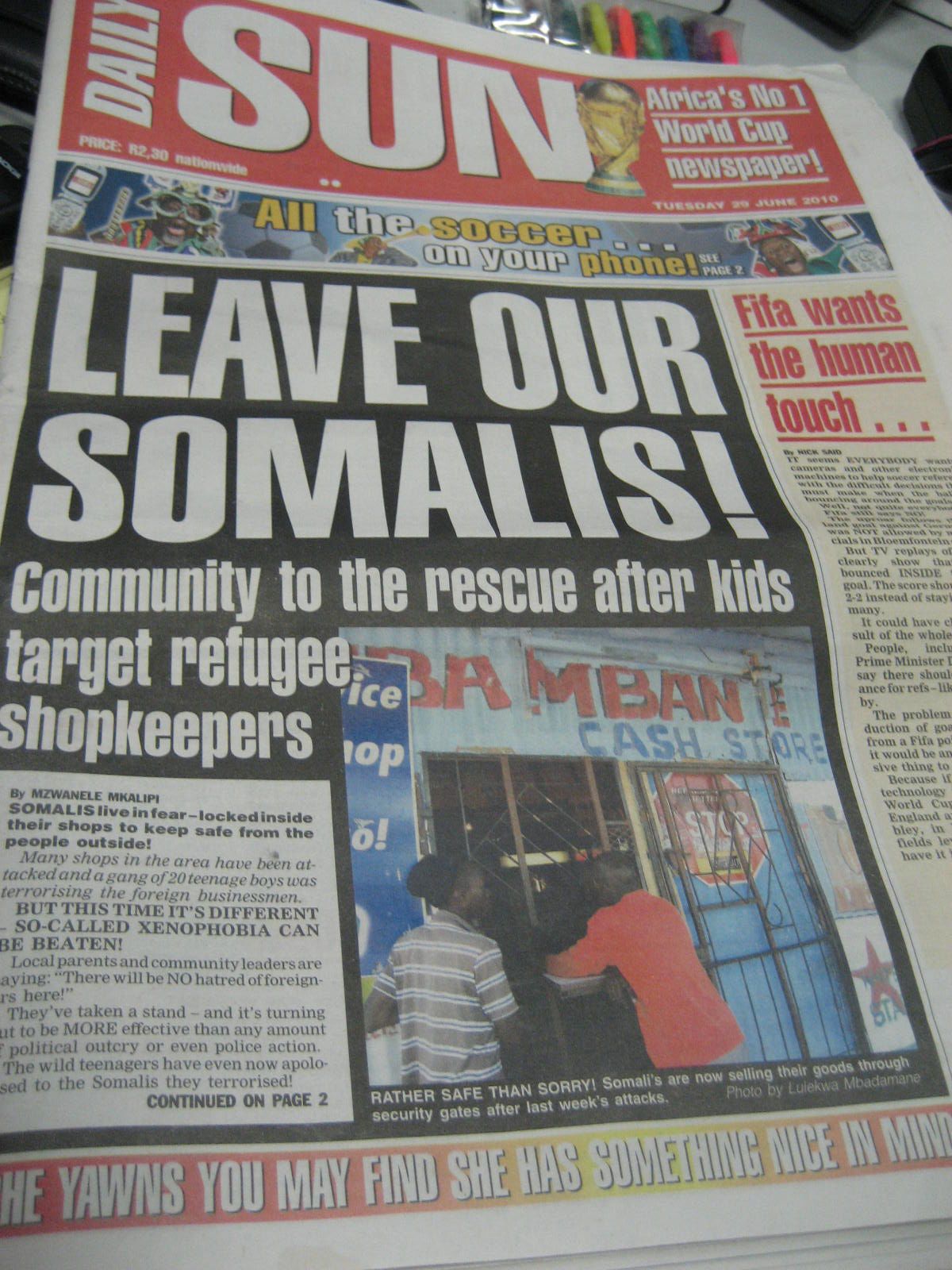

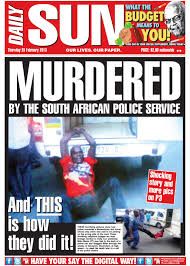
MYTHS & STEREOTYPES DISPELLED
Footage from various xenophobic attacks in South Africa from Eyewitness News archives
Footage from various xenophobic attacks in South Africa from Eyewitness News archives
PANIC!
Xenophobic attacks bring about a storm of graphic videos and photos, but many, although purported to be so, are unrelated.
WhatsApp messages, claiming that foreign nationals will face further attacks go viral causing fear.

THE WAY FORWARD
1. Xenowatch
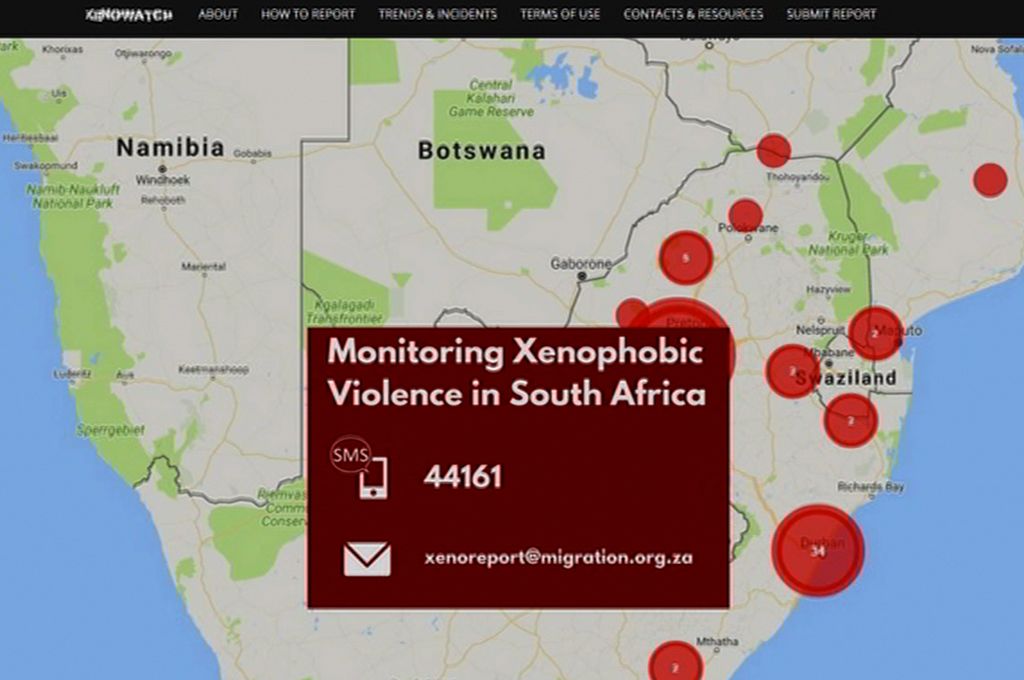
Image from http://www.xenowatch.ac.za/
Image from http://www.xenowatch.ac.za/
A tool to monitor xenophobic threats and violence across South Africa: it collates, visualizes and makes data publicly available
Activists, victims, and observers can report xenophobic threats and attacks using via free SMS, email, mobile app, whatsApp/Call and the website.
2. Journalist's toolkit to unsettle the narrative
* Pitch proactive stories about migration rather than the usual reactive stories covering xenophobic events.
* Writing unique and exclusive stories on the ‘humans’ behind migration.
* Publishing stories that do not follow dominant narratives that relates migration with violence or crime.
* Moving away from stories that cast non-nationals vs. South Africans as caricatures.
* Pieces that explore how our politicians comment on the issue of migration without always having the facts to back it up!

3. Call it what it is!
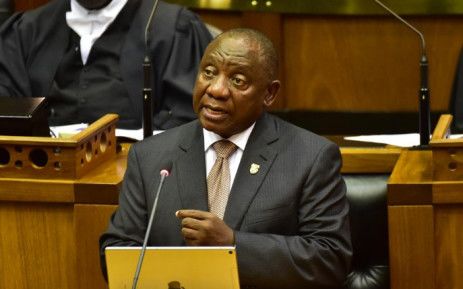
President Cyril Ramaphosa condemning xenophobic violence during the State of the Nation Address on 7 February 2019. Picture: Twitter/parliamentofrsa
President Cyril Ramaphosa condemning xenophobic violence during the State of the Nation Address on 7 February 2019. Picture: Twitter/parliamentofrsa
To effectively combat xenophobia, the government and police need to publicly acknowledge attacks on foreign nationals and their property as xenophobic and take decisive action.
This should include ensuring proper police investigations of xenophobic crimes and holding those responsible to account.
Inflammatory public statements – such as those made by Johannesburg mayor Herman Mashaba in December 2016, blaming illegal immigrants for crimes and calling on them to leave the city – should be strongly condemned.
The National Action Plan is a welcome development indicating government’s intent to fight xenophobia, racism, and all forms of discrimination and prejudice.
Now it should fully implement that plan, and work to stem the dangerous tides of intolerance for good.
